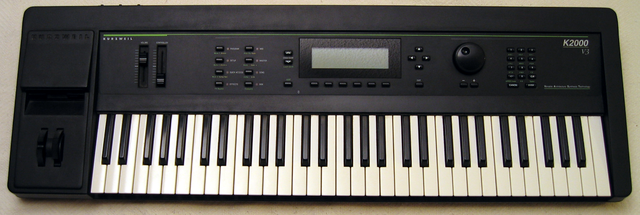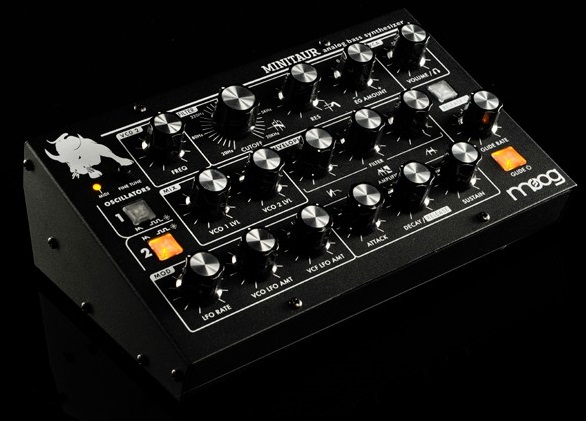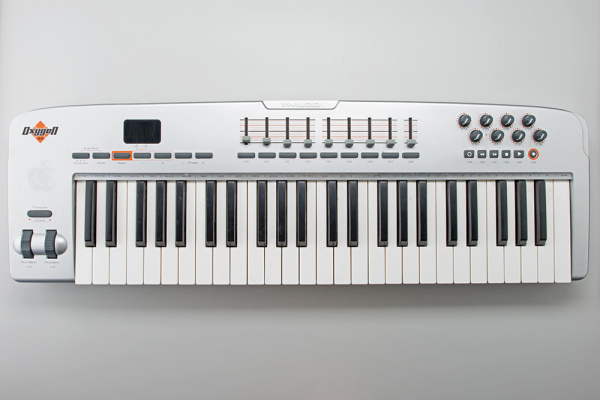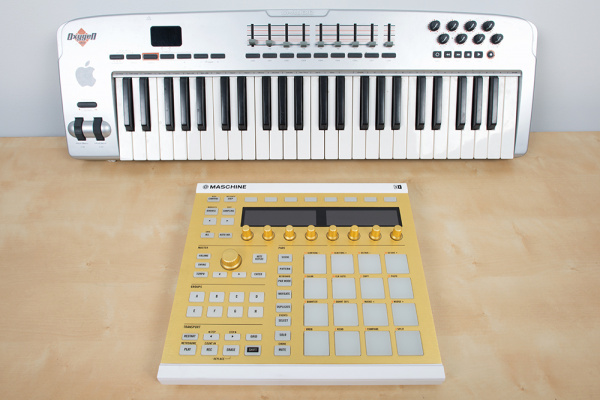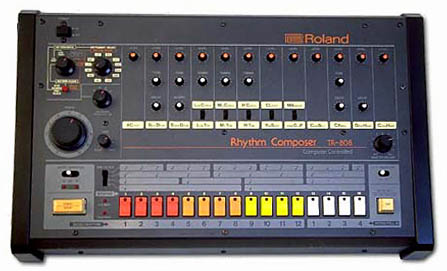MIDI Tutorial
MIDI Devices
Before we get into the details of the protocol, let's look at some of the devices that incorporate MIDI and introduce the terminology surrounding them.
Keyboard Synthesizer
The most obvious MIDI device is the ordinary keyboard synthesizer. For the purposes of this tutorial, we'll be calling anything that can generate sound a synthesizer or tone generator. From a general perspective, the specific method used to generate the sound is unimportant, and there are many subtle distinctions that differentiate between instruments.
The keyboard synthesizer typically has a piano keyboard (called the controller), and an internal tone generator, which could be analog, digital, or even mechanical. The player presses a key, and the synth produces a sound in response.
Depending on the underlying technology, a synthesizer can be:
- Monophonic - capable on playing a single note at a time, like woodwind or brass instruments.
- Polyphonic - capable of playing multiple notes simultaneously, like a guitar, piano or organ. The number of simultaneous sounds is often limited, specified as the number of voices it can generate.
- Multitimbral - a polyphonic synthesizer that is capable of playing different sounds simultaneously. Multitimbral instruments often have different modes for using these sounds:
- Layering simply lets the performer play the multiple sounds at the same time, in unison.
- A keyboard split assigns different voices to different regions of the keyboard. One example is a string bass on the left side of the keyboard, and a piano on the right side.
- A velocity split changes sounds depending on how hard the keyboard is struck. A soft touch could result in a glass harmonica sound, while a harder hit might elicit a pyrophone.
The controller and sound generator functions don't need to be bundled in the same unit, though. They could also be separate components.
Standalone Sound Generators
Standalone MIDI sound generators, also known as sound modules, are instruments that generate sound, but have no on-board provision for playing. They can take many forms, the two most common might be the tabletop module
and the rack-mount unit.
One other type of synthesizer we'll include in this category is the virtual or software synthesizer, a piece of software running on a computer. There are many virtual synthesizers available today, including emulations of classic, vintage instruments, and complex types of sound generation that might be impractical as dedicated standalone devices.
While the shapes differ, they are functionally equivalent. They receive commands on their MIDI input, and respond by generating sounds. They are usually used with a computer sequencer or an external MIDI controller.
Standalone Controllers
The flip-side of the standalone sound generator is the standalone MIDI controller. The most common is probably the MIDI keyboard controller.
This offers a set of piano keys, sometimes grouped with extra knobs, wheels or levers. It doesn't generate any sound on its own, instead sending MIDI messages to an external tone generator.
MIDI controllers have evolved significantly in recent years, particularly as virtual instruments have proliferated. A MIDI controller allows the player to access settings using physical controls. They can turn a physical knob instead instead of reaching for the mouse. A wide variety of controllers are now available, reflecting many different musical applications. These include electronic drumsets, saxophones, mixing consoles, and DJ turntables.
Drum Machine
A drum machine contains two major elements: a sound generator, and a sequencer.
The sound generator portion is similar to those described above, a synthesizer tailored to making drum and percussion sounds.
The sequencer is used to capture and play back drum beats, triggering the associated sound generator. Some sequencers are read-only, only playing back prerecorded rhythms -- remember the "cha-cha", "tango" and "merengue" buttons on your grandparents' parlor organ? Most drum machines are programmable, allowing the user to create their own rhythms, although the specific programming interface varies widely.
Computers
MIDI has grown up alongside the personal computer, and PCs frequently feature MIDI interfaces. MIDI was hidden in the 15-pin joystick interface on older PC soundcards, broken out to 5-pin DIN connectors with a pigtail adapter. Of course, the 15-pin joystick plug has disappeared, and joysticks now connect via USB. Conveniently enough, USB also defines a MIDI device class, so MIDI is available on modern computers.
We mentioned virtual instruments above, but there are many other types of MIDI application for the PC. Whether it's connected with an actual MIDI port, or via USB, the personal computer is capable of running programs to serve a number of different MIDI functions.
- Like the drum machine, a sequencer program records MIDI messages and plays them back, possibly also allowing the user to edit and rearrange the MIDI data. Sequencers take many forms, from the very simple to the extremely sophisticated.
- Notation programs allow the user to compose music by writing in musical notation on the staff, then print the resulting scores.
- A patch editor serves as an onscreen substitute control panel for a synthesizer. Editors are especially popular for instruments with only a small LCD for accessing the internal parameters, as the PC GUI can display the sonic parameters much more clearly.
- The librarian is used to load, save, and organize the sounds on an instrument.
These features may all be combined in a single application. A modern sequencer might also host virtual instruments, be able to edit and organize patches, as well as record and edit MIDI and digital audio.
Other Applications
MIDI sometimes pops up on devices that aren't strictly musical instruments. One common application is controlling stage lighting, although large light systems are more commonly controlled via the DMX-512 serial protocol.
Musicians are also a creative bunch of people. There are many examples of people building unique instruments, enabled by the ubiquity of MIDI.
